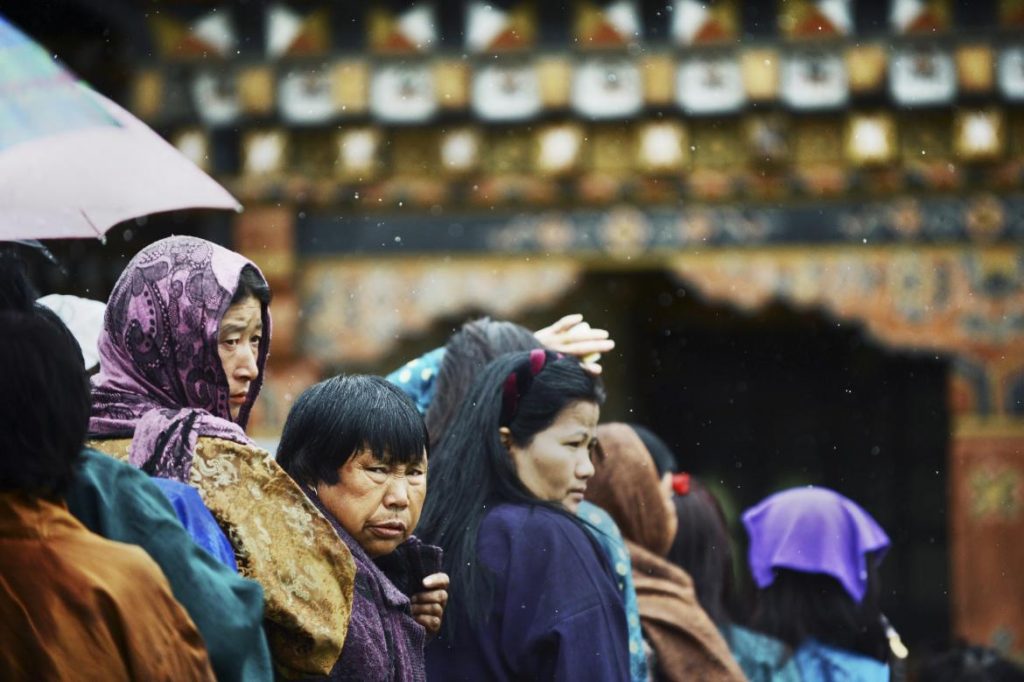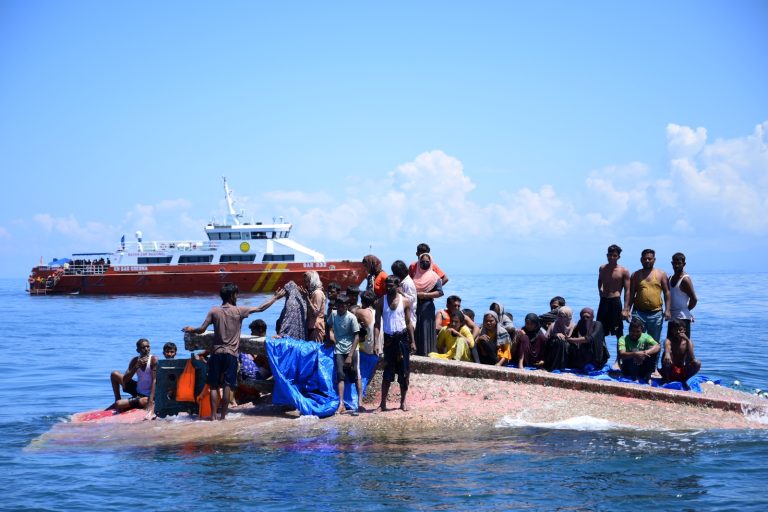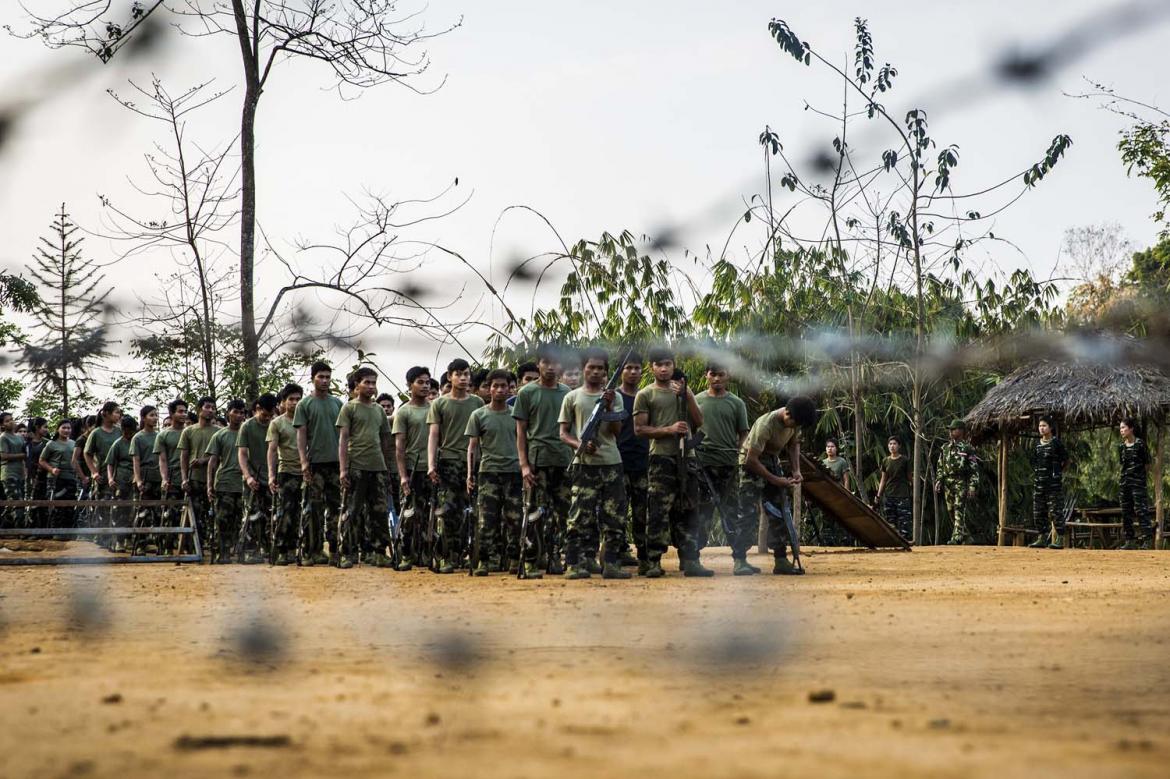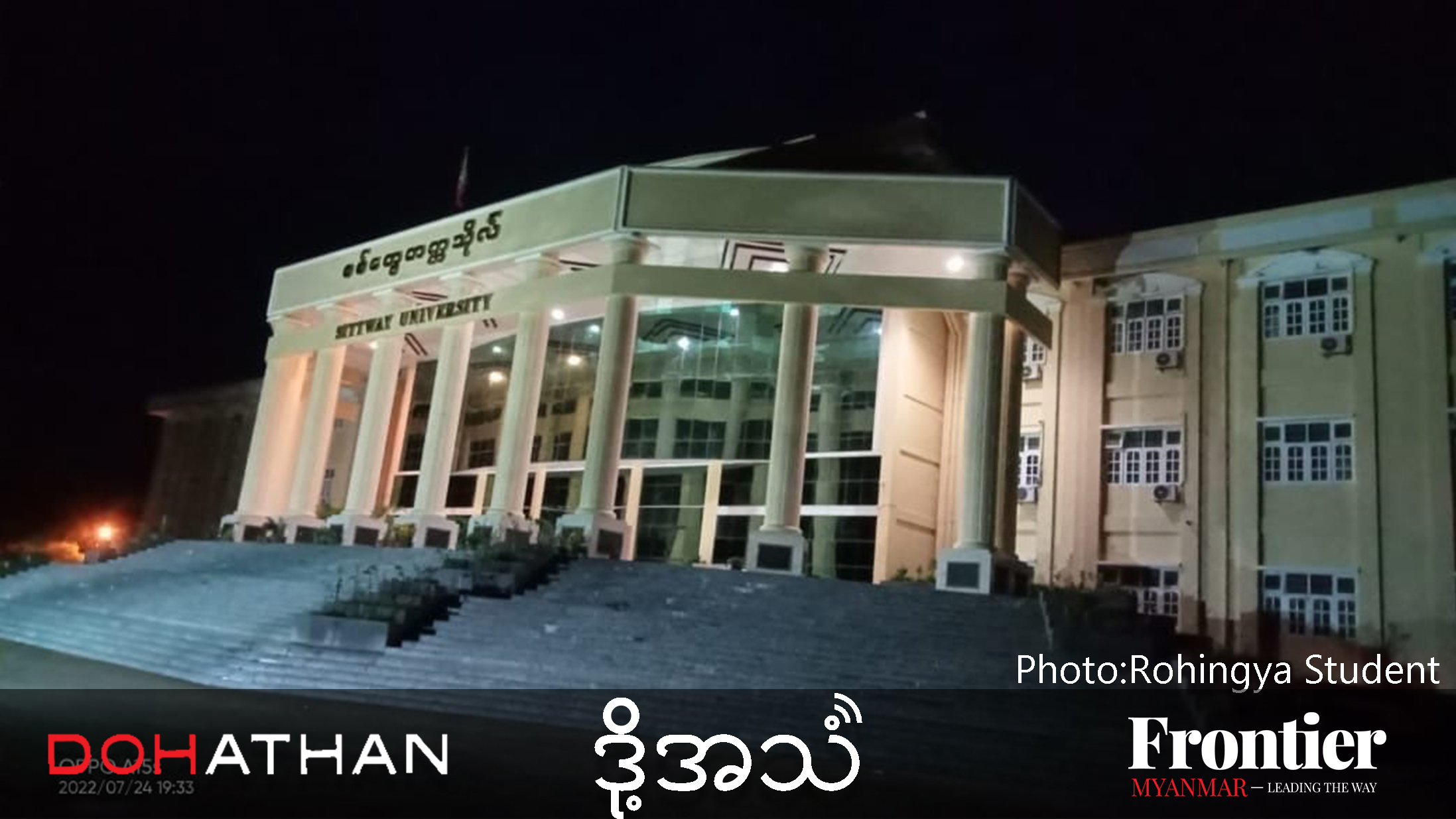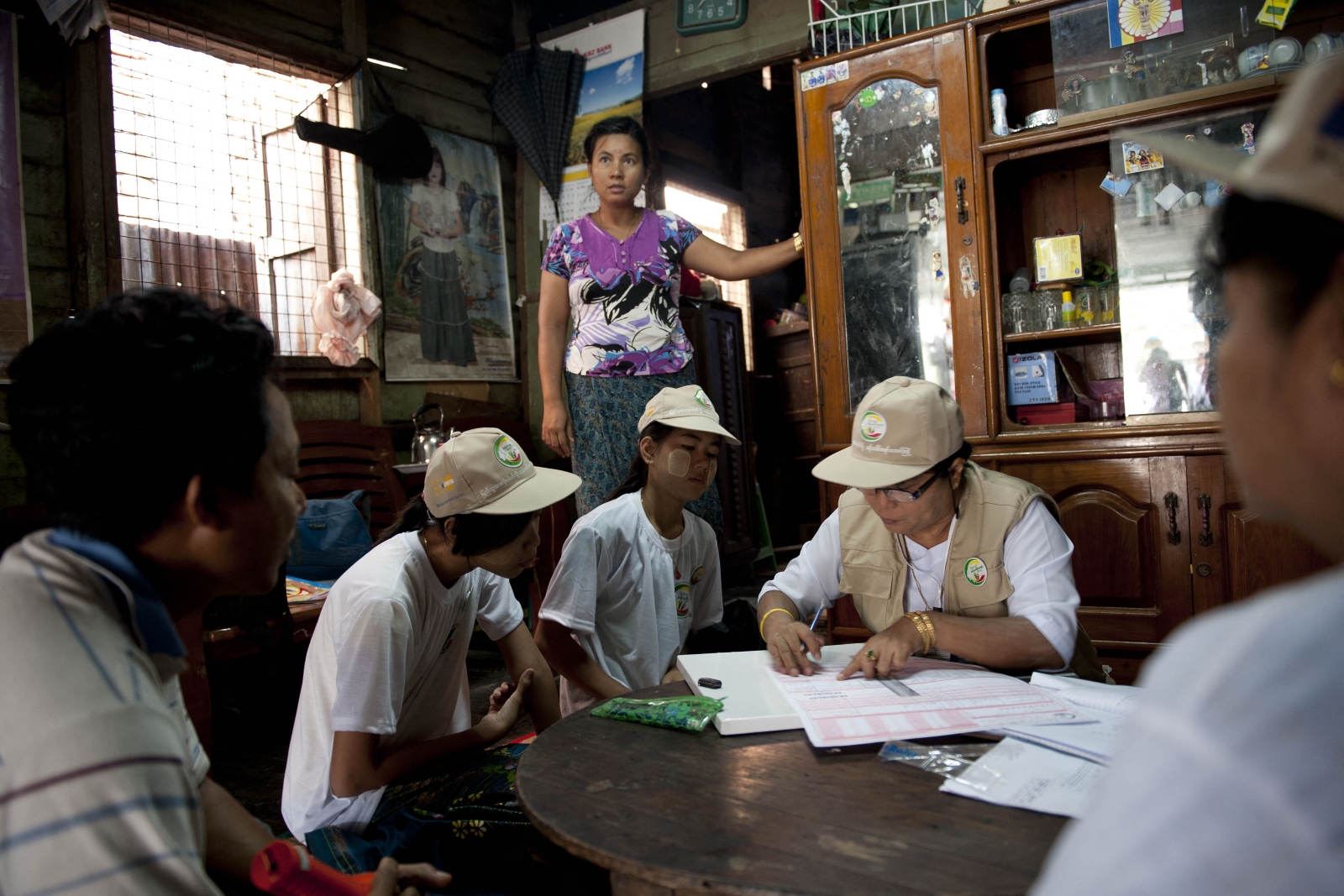Bhutan’s experiment with democracy is worth emulating but its record on minority rights is a stain on its image as a refuge of tranquility.
In 2007, a decidedly strange election took place in the isolated Himalayan kingdom of Bhutan, better known for its dramatic landscapes and ancient culture than for innovations in participatory democracy.
To familiarise the Bhutanese with elections, King Jigme Khesar Namgyel Wangchuck decided to hold a “mock vote” between four fictional colour-coded parties, in anticipation of real elections that would transform the country from an absolute monarchy to a constitutional monarchy.
The next year, Bhutan went to the polls for the first time. The country’s first constitution — the product of a seven-year drafting process — was enacted. Jigme Yoser Thinley, the leader of the new Peace and Prosperity Party, became Bhutan’s first democratically-elected prime minister. Two parties contested the election — Thinley’s party, colour-coded red, and the opposition People’s Democratic Party, colour-coded blue.
Thinley admits that there wasn’t much to differentiate the candidates in 2008. “It was more a personality-based election the first time,” he told Frontier. In 2013, he said, “people could not imagine being ruled or led, so to speak, by people – as far as they were concerned, [they were] unknown quantities, who were serving His Majesty.”
Bhutan’s monarchy is held in almost unassailable esteem by its citizens, so it would be unfair to draw a direct comparison between it and Myanmar’s military. The fact remains, however, that the trajectory of democratisation in both Bhutan and Myanmar has been driven by elites, not popular mass movements agitating for change. Both institutions wielded absolute power before voluntarily relinquishing some of it in carefully managed transitions.
Despite its public image in the West as a refuge of tranquility and traditionalism in a globalising world, Bhutan’s ethnic malaise casts a long shadow over its democratisation process — the same unwelcome travails that bring the sincerity of Myanmar’s democratic transition into question as November’s elections approach.
Support more independent journalism like this. Sign up to be a Frontier member.
One glaring parallel is the notion of who is allowed to be part of the state — and who is not. Despite its small size and a population of just 750,000, Bhutan is a heterogeneous country, dominated by ethnic Ngalops and the Dzongkha language. Most Bhutanese are Tibetan-descended Buddhists who follow what is known as Drukpa culture.
Thinley visited Myanmar last week as part of a delegation from the Club de Madrid, a group of “democratic former presidents and prime ministers from around the world,” who visited Myanmar to provide “high-level support” for Myanmar’s democratic transition.
“There are many interesting parallels between Bhutan and Myanmar, the same kind of challenges,” Thinley said. “Among others, [both] countries have no democratic culture. People do not really understand the meaning of the vote. They do not appreciate that they are going to be really empowered.”
The most significant non-Drukpa minority in Bhutan are the Lhotshampas (literally, “southerners”). They are ethnic Nepali Hindus with a distinct identity and customs, who comprise about 25 percent of the population. There used to be many more of them in Bhutan. In the early 1990s, more than 100,000 Lhotshampas fled the kingdom in a mass exodus of about one-sixth of the population.
Although the Bhutanese government maintains that Lhotshampas left of their own accord, the security forces actively expelled tens of thousands and intensifying persecution prompted the rest to flee.
Restrictive measures, passed in the 1980s, included removing Nepali as a medium of instruction in schools, and induced Lhotshampas to adopt the cultural affectations and dress of the Drukpa majority. A restrictive citizenship law passed in 1985 stripped Lhotshampas of citizenship if they could not prove a presence in Bhutan before 1958. After a census in 1988, tens of thousands were rendered stateless and sent into exile. Most found temporary refuge in Nepal, where 25,000 remain confined to two refugee camps. Of the rest, most have been settled in the United States.
Despite its public image in the West as a refuge of tranquility and traditionalism in a globalising world, Bhutan’s ethnic malaise casts a long shadow over its democratisation process — the same unwelcome travails that bring the sincerity of Myanmar’s democratic transition into question as November’s elections approach.
As far as Thinley is concerned — and despite protestations and documentation provided by Lhotshampas — the refugee issue is not open for debate. “Where are the 100,000 people you’re talking about? They don’t exist anymore. They’ve been resettled,” he said.
The Lhotshampas expelled in the 1990s had arrived in the 1970s and 1980s, he said, although many –— ncluding a large number of those sent into exile — assert ancestry dating back generations, claims that are backed up by tax records from the British colonial era. “You are talking about a large number of illegal immigrants who came into my country at a time when their own country was going through difficulties,” Thinley said. “What difficulties? A massive demographic explosion. Ecological disasters.”
It is language that closely parallels Myanmar’s justification for stripping Rohingyas of citizenship and classifying them as illegal immigrants under the 1982 Citizenship Law, despite the fact that most have roots in Myanmar dating to the colonial era or beyond.
In Rakhine State and further afield, there is a pervasive belief that the Rohingyas intend to colonise the land due to overpopulation in neighbouring Bangladesh, although there is no evidence to suggest this is the case. Waves of violent expulsions — notably in 1978 and 1991 — forced tens of thousands over the border, and more than 100,000 remain confined to squalid camps in Rakhine.
A leaked copy of the Myanmar government’s “action plan” for Rakhine, leaked to the media last year, proposed the mass expulsion of Rohingyas and wanted the UN refugee agency, the UNHCR, to take the lead in resettling them in third countries. The UN, unsurprisingly, refused to be complicit in ethnic cleansing.
And yet, as far as Thinley is concerned, the international community accepted what happened in Bhutan in the 1990s. “You are dwelling on an issue that is long dealt with,” he said. Turning the Lhotshampa narrative on its head, he claimed that it was Bhutan that was the recipient of refugees and Nepal was the “refugee-generating country.” Bhutan, Nepal and “a sympathetic international community have all come together to ensure that a decent and a dignified alternative has been found,” he said.
Bhutan has, without a doubt, made great strides towards democracy in a short time. “What happened in 2008 was not a sudden event. It was the culmination of a long process of planning arising from a vision of a man — the King — who believed the future of Bhutan must lie in the hands of the people,” Thinley said.
And although the Lhotshampas who remain in Bhutan do not enjoy the same rights as the Drukpa majority, they enjoy rights that are denied to the Rohingyas and other Muslim minorities in Myanmar. No major political party in Myanmar has fielded a Muslim candidate for the election. In Bhutan’s 2008 polls, by contrast, nine Lhotshampa candidates won seats in Parliament, even though a European Union observation team noted that the “practice of allowing voter education, campaign and election materials to be printed only in Dzongkha and English is contrary to international standards for minority language use”. The EU team also said “the conduct of candidate debates only in Dzongkha, even in areas where it is not widely spoken, inhibited the ability for some voters to receive information about the candidates.”
If we exclude — as Bhutan’s government has done — the rights of those deserving of citizenship who live in exile, the country is progressing well towards true multiparty democracy. In the 2013 polls, the number of parties had doubled to four. The opposition won, with little fanfare or protest from the incumbents — a good omen for the durability of Bhutan’s nascent democracy.
But if inclusion is the goal — and in Myanmar, it needs to be — Bhutan is not a model to follow. While Bhutan’s royal family has largely stepped away from running day-to-day affairs, the military in Myanmar has retained expansive powers that undermine the development of democracy. Championing the disenfranchisement of the Rohingyas to bolster their popularity – as all of Myanmar’s major parties have done – plays right into the hands of xenophobic, anti-democratic forces, and augurs poorly for Myanmar’s future prospects as a viable democracy.


